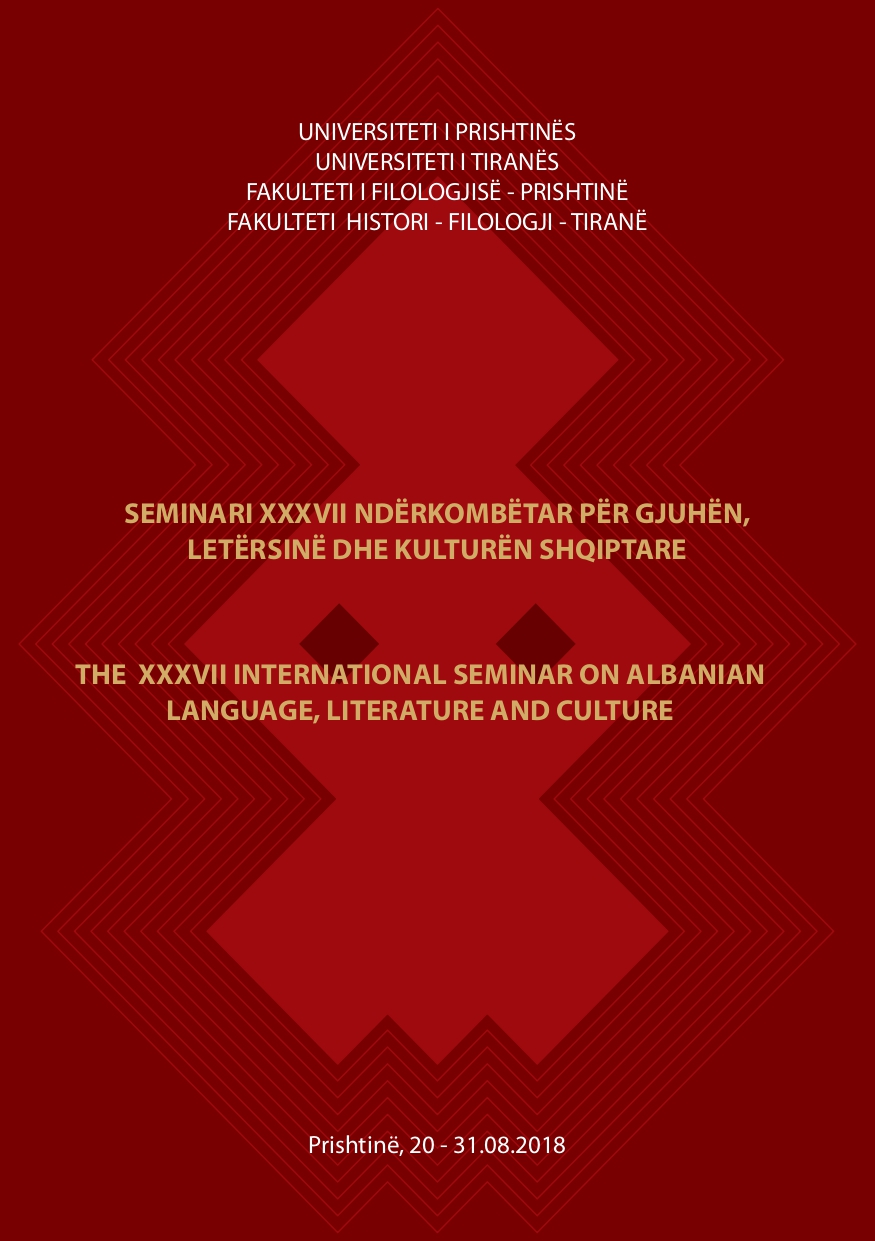Përcjellja e informacioneve të kohës përmes pikturës murale, vëzhguar në pikturën pasbizantinetë kishave të Vithkuqit
Conveying information of the time through wall paining as seen in the post-byzantine paintings in the churches of Vithkuq
Author(s): Rozela DhimgjiniSubject(s): History, Visual Arts, Communication studies
Published by: Univeristeti i Prishtinës, Fakulteti i Filologjisë
Keywords: post-byzantine; wall painting; Vithkuq; iconography; saints; martyrs; brothers Zografi;
Summary/Abstract: The figurative art has served in the earliest periods of human history as a means of communicating feelings and information. Religious art in general has been an informative and didactic mission. The Byzantine conservative orthodox art has used its iconic strings and ecclesiastical painting as a guiding form. This ecclesiastical methodology is still noticed in post-byzantine art.In the Vithkuq churches of the 18th century, where still wall paintings can be read and are not damaged, there are numerous saints and martyrs in the last line of the iconographic program. This line of figurative scheme is positioned close to the orthodox believer in these churches. The selection and grouping of saints and martyrs in this figurative line beside the believer transpires information on the religious, political and cultural strategies of these orthodox areas during the turkish rule.The appearance of a significant number of saints at St. Mëhill's Church in Vithkuq (painted in 1728), such as St. Katarina, St. Barbara, St. Marina, St. Irena in the western part, shows the appreciation of women and nuns living in these areas. In the same church is painted for the first time the figure of Saint John Vladimir with a cropped head. His iconographic type was commissioned in Venice. The western typology assessment is undeniable here.The appearance of the new martyr Saint Nicodemus from Vithkuqi for the first time in the small church of Ss. Kosmas and Damian (painted by 1636 by prominent painters Constantine and Athanas Zografi), follows an example of the christian center front faced by the ottoman invaders.The resurrection and the appearance of slavic saints such as St. Cyril, St. Clement, St. Nahum, St. Saves, etc. in all the churches of Vithkuq, follows the rules and religious policies of the Patriarchate of Ohrid. An important part of this Patriarchate was Vithkuqi.It is clear that Post-Byzantine wall paintings in the eighteenth century has not only artistic value, it is functioning mainly for tracking information and religious-political styles.
Journal: Seminari Ndërkombëtar për Gjuhën, Letërsinë dhe Kulturën Shqiptare
- Issue Year: 2018
- Issue No: 37.2
- Page Range: 515 - 525
- Page Count: 11
- Language: Albanian

